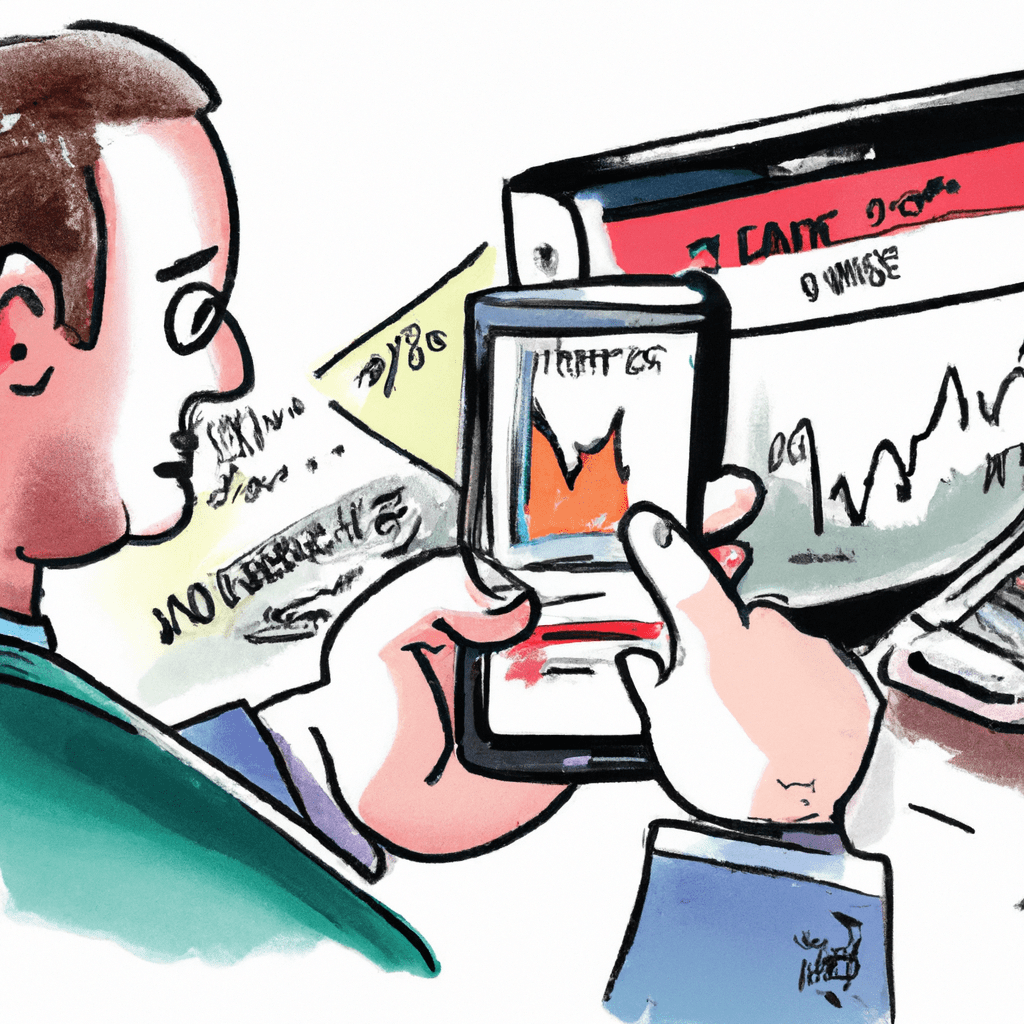This section highlights the importance of forex tools and signals in maximizing profits in forex trading. It discusses various tools such as charts, economic calendars, and news aggregators, and emphasizes the need for effective trading strategies. It also mentions the benefits of using platforms with advanced features and concludes by emphasizing the role of charts and strategies in achieving success in forex trading.
In the fast-paced world of financial markets, forex trading has emerged as a popular and lucrative opportunity for traders of all backgrounds. With its potential for high returns and 24-hour accessibility, forex trading has become a go-to choice for individuals looking to diversify their investment portfolios. This article aims to provide readers with a comprehensive guide to forex trading, covering everything from the basics and spread-betting to utilizing forex tools, FX signals, charts, and strategies for successful trading in the FX markets. Whether you are a novice trader or an experienced investor, this article is your roadmap to navigating the exciting world of forex trading and maximizing your profits.
1. “An Introduction to Forex Trading: Understanding the Basics, Spread-Betting, and CFD Trading”

Forex trading, also known as foreign exchange trading, is the act of buying and selling currencies in the global market. It is the largest and most liquid financial market in the world, with trillions of dollars being traded on a daily basis. Understanding the basics of forex trading is crucial for anyone looking to enter this exciting and potentially lucrative market.
One popular method of forex trading is spread-betting. Spread-betting allows traders to speculate on the price movements of currency pairs without actually owning the underlying assets. Instead, traders place bets on whether the price of a currency pair will rise or fall. This method provides flexibility as traders can profit from both rising and falling markets.
Another popular trading method is CFD (Contract for Difference) trading. CFDs allow traders to speculate on the price movements of various financial instruments, including currencies. With CFD trading, traders can take advantage of leverage, which means they can control larger positions with a smaller amount of capital. This amplifies both potential profits and losses, so it is important to exercise caution and use risk management strategies.
To make informed trading decisions, traders often rely on various forex tools and indicators. These tools include charts, which display historical price data and patterns. By analyzing charts, traders can identify trends and potential entry or exit points for their trades. Additionally, traders can utilize forex signals, which are recommendations or alerts generated by experienced traders or automated systems. These signals provide insights into potential trading opportunities.
The forex market, also known as the FX market, operates 24 hours a day, five days a week. This allows traders to access the market at their convenience and take advantage of global economic events and news that can impact currency prices. However, it is important to note that forex trading involves risks, and it is essential to have a solid understanding of the market and risk management strategies.
In conclusion, forex trading is a dynamic and fast-paced market that offers opportunities for profit. Spread-betting and CFD trading are popular methods used by traders to speculate on currency price movements. By utilizing forex tools such as charts and signals, traders can make informed decisions. However, it is important to remember that forex trading involves risks, and traders should always exercise caution and implement appropriate risk management strategies.
2. “Maximizing Profits with Forex Tools and FX Signals: A Comprehensive Guide for Traders”

Maximizing Profits with Forex Tools and FX Signals: A Comprehensive Guide for Traders
Forex trading is a dynamic and potentially profitable financial market where traders can speculate on the fluctuations of currency pairs. To succeed in this fast-paced environment, traders need to arm themselves with the right tools and strategies. In this comprehensive guide, we will explore how forex tools and FX signals can help traders maximize their profits and achieve success in the forex market.
One of the essential tools for forex trading is utilizing forex signals. These signals are indicators or alerts that provide traders with valuable insights into potential market movements. By analyzing various technical and fundamental factors, forex signals can help traders make informed decisions about when to enter or exit trades. The use of forex signals not only saves time but also enhances trading accuracy, as they are generated by experienced analysts or sophisticated algorithms.
To effectively utilize forex signals, traders should integrate them into their trading strategies. By combining the insights provided by these signals with their own analysis, traders can increase their chances of making profitable trades. Forex signals can be received through various mediums, including email, SMS, or even through dedicated mobile applications, ensuring that traders never miss out on potential trading opportunities.
In addition to forex signals, traders can also leverage forex tools to enhance their trading experience. These tools range from advanced charting software to economic calendars and news aggregators. By using charting tools, traders can analyze historical price data and identify patterns or trends that can help them make informed trading decisions. These charts provide valuable information such as support and resistance levels, moving averages, and various technical indicators, enabling traders to formulate effective trading strategies.
Forex tools also include economic calendars, which provide information about upcoming economic events, such as interest rate decisions, GDP releases, or employment data. By staying informed about these events, traders can anticipate market volatility and adjust their trading strategies accordingly. Similarly, news aggregators gather news from various sources, ensuring that traders are up to date with the latest developments that may impact currency values.
Moreover, traders can also utilize platforms and brokers that offer additional forex tools and features. These platforms often provide access to advanced order types, such as stop-loss and take-profit orders, which help manage risk and maximize profits. Additionally, some brokers offer social trading platforms, where traders can follow and copy the trades of successful traders, leveraging their expertise to boost their own profitability.
In conclusion, maximizing profits in forex trading requires the utilization of forex tools and FX signals. These tools provide traders with valuable insights, analysis, and alerts that help them make informed trading decisions. By integrating forex signals into their strategies and utilizing various forex tools, traders can enhance their trading accuracy, stay informed about market events, and effectively manage risk. Whether it's advanced charting software, economic calendars, or social trading platforms, the right tools can significantly contribute to a trader's success in the forex market.
3. “Navigating the FX Markets: Utilizing Forex Charts and Strategies for Successful Trading”

Navigating the FX Markets: Utilizing Forex Charts and Strategies for Successful Trading
When it comes to forex trading, one of the most important tools at your disposal is forex charts. These charts provide valuable insights into the movements and trends of currency pairs in the market. By analyzing these charts, traders can make informed decisions and develop effective strategies to maximize their chances of success.
Forex charts typically display price movements over a specific time period, allowing traders to identify patterns and trends. There are different types of charts available, such as line charts, bar charts, and candlestick charts. Each type offers unique advantages and can be used to analyze the market in different ways.
Line charts, for example, provide a simple representation of the closing prices of a currency pair over time. They are useful for identifying long-term trends and determining overall market direction. On the other hand, bar charts display the opening, closing, high, and low prices for a specific time period. They offer a more detailed view of price movements and can be used to identify support and resistance levels.
Candlestick charts are perhaps the most popular among forex traders. They provide a visual representation of price movements by using candlestick patterns. These patterns reveal important information about market sentiment and can indicate potential reversals or continuation of trends. By understanding and interpreting these patterns, traders can make more accurate predictions and execute well-timed trades.
In addition to utilizing forex charts, traders should also develop effective strategies for successful trading. These strategies can help mitigate risks and increase the probability of profitable trades. Some popular strategies include trend following, range trading, and breakout trading.
Trend following involves analyzing charts to identify the overall direction of the market and then trading in line with the established trend. This strategy assumes that the current trend is likely to continue and aims to ride the wave until signs of a reversal appear.
Range trading, on the other hand, is suitable for markets that are trading within a specific range. Traders identify support and resistance levels and execute trades when the price reaches these extremes. This strategy aims to profit from the repetitive nature of price movements within a given range.
Breakout trading focuses on identifying key levels of support or resistance that, when broken, indicate a potential change in market direction. Traders closely monitor these levels and execute trades when a breakout occurs, expecting a strong move in the direction of the breakout.
To enhance their trading strategies, traders can also utilize various forex tools and resources. These include forex signals, which provide real-time market analysis and suggestions for potential trades. Forex signals can help traders identify profitable opportunities and validate their own analysis.
In conclusion, navigating the FX markets successfully requires utilizing forex charts and developing effective trading strategies. By analyzing charts and understanding the various patterns and trends, traders can make informed decisions and increase their chances of profitability. Additionally, implementing proven strategies and utilizing forex tools such as signals can further enhance trading performance. As always, it is important for traders to stay updated on market trends, practice risk management, and continuously refine their skills to achieve long-term success in forex trading.
In conclusion, forex trading offers a wealth of opportunities for traders to maximize profits and navigate the complex FX markets. Understanding the basics, such as spread-betting and CFD trading, is crucial for beginners looking to get started. By utilizing forex tools and FX signals, traders can enhance their decision-making process and increase their chances of success. Additionally, forex charts and strategies play a vital role in identifying trends and making informed trading decisions. With the right knowledge and skills, traders can harness the power of forex trading and make the most out of the dynamic and ever-changing markets. So, whether you are a beginner or an experienced trader, remember to stay informed, utilize the available resources, and continuously adapt your strategies to achieve success in the forex trading world.





